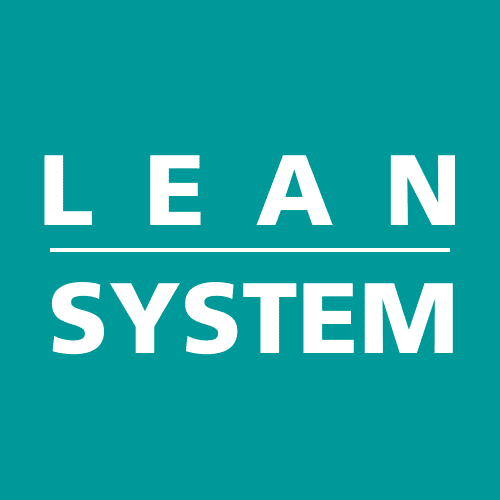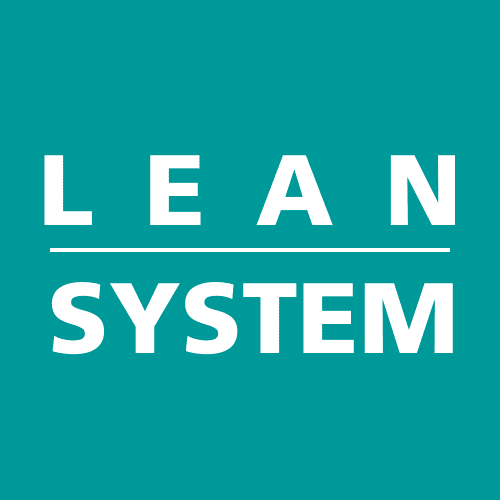Are you looking for a way to boost efficiency and streamline decision making in your business practices? Look no further than Pareto Analysis, also known as the 80/20 rule or Pareto Principle.
This powerful analytical technique can help you identify the most critical issues and opportunities in your organization. By focusing on the 20% of factors that contribute to 80% of the results, you can prioritize your efforts and resources for maximum impact.
Whether you work in manufacturing, service, or any other industry, Pareto Analysis can be applied to any process or problem. By understanding the root causes and patterns of issues, you can make informed decisions and drive continuous improvement.
Key Takeaways:
- Pareto Analysis is a powerful analytical technique for streamlining decision making.
- Also known as the 80/20 rule or Pareto Principle, this approach helps you identify the most critical issues and opportunities in your organization.
- By focusing on the 20% of factors that contribute to 80% of the results, you can prioritize your efforts and resources for maximum impact.
- Pareto Analysis can be applied to any process or problem in any industry.
- Understanding the root causes and patterns of issues can help you make informed decisions and drive continuous improvement.
Implementing Pareto Analysis
Now that you understand the power of Pareto Analysis, it's time to learn how to implement it effectively in your organization. By following these simple steps and using the right tools, you can streamline decision making and boost efficiency in your business practices.
Step 1: Define the Problem
The first step in implementing Pareto Analysis is to clearly define the problem you are trying to solve. This could be related to anything from production processes to customer complaints. Once you have identified the problem, record all relevant data and metrics.
Step 2: Gather Data
Next, gather data on the problem and organize it in a way that makes it easy to analyze. This could include using a spreadsheet or a specialized software tool for Pareto Analysis. Make sure to include all relevant data points, such as the frequency of the problem, the severity of the issues, and the costs associated with it.
Step 3: Create a Pareto Chart
Once you have gathered your data, it's time to create a Pareto Chart. This chart will visually represent the data in a way that shows which issues or factors are most significant and should be prioritized. The chart will typically show the frequency or impact of each factor, ranked in descending order.
To create a Pareto Chart, follow these steps:
- List the issues or factors in order from most frequent or impactful to least.
- Plot the cumulative total as a line graph.
- Label the left vertical axis with the frequency or impact.
- Label the right vertical axis with the cumulative percentage.
- Add a horizontal line to represent the 80% mark.
By creating a Pareto Chart, you will be able to easily see which issues or factors are causing the most problems, and prioritize your resources accordingly.
Step 4: Take Action
Now that you have a clear understanding of which issues or factors should be prioritized, it's time to take action. You can use a variety of techniques, such as root cause analysis or process improvement, to address these issues and optimize your business operations.
Examples
Here are a few examples of how Pareto Analysis has been successfully implemented in various industries:
| Industry | Problem | Outcome |
|---|---|---|
| Manufacturing | Production line downtime | Reduced downtime by 30% through targeted process improvements to the most frequent causes of downtime identified by Pareto Analysis. |
| Service | Customer complaints | Addressed the top 20% of complaints, which accounted for 80% of total complaints, resulting in a 50% reduction in overall complaints. |
| Retail | Inventory management | Identified the top-selling products and optimized inventory levels accordingly, resulting in a 25% reduction in excess inventory and an increase in sales. |
By using the right techniques and tools, Pareto Analysis can have a significant impact on your business's decision making and efficiency.
Implementing Pareto Analysis requires an investment of time and resources, but the benefits can be significant. By following the steps outlined above, using the right tools, and learning from real-life examples, you can apply this methodology for better decision making and improved business practices.
Pareto Analysis in the Manufacturing Industry
The manufacturing industry is heavily reliant on systematic processes and workflows. Any issues that arise during production can have a significant impact on overall efficiency and output. This is where Pareto Analysis comes in as a powerful tool to identify and prioritize problems affecting the production process.
The implementation of Pareto Analysis can bring many benefits to the manufacturing industry, including:
- Better problem identification: Pareto Analysis enables manufacturers to distinguish between significant problems that are having a major impact on the manufacturing process and those that are less important. This, in turn, allows the company to focus its resources on the critical problems first.
- Optimized production: By identifying significant issues and prioritizing them, manufacturers can streamline their production processes and achieve greater efficiency. By doing so, production time can be reduced, and productivity can be enhanced.
- Improved decision making: Pareto Analysis supports evidence-based decision making. Based on quantifiable data, it provides manufacturers with the insights they need to make informed decisions about taking action on the most significant problems that are impacting their production process.
Here are some examples of how Pareto Analysis can be applied in the manufacturing industry:
| Problem | Frequency | Cumulative Frequency | % of Total | % of Cumulative Total |
|---|---|---|---|---|
| Poor equipment maintenance | 100 | 100 | 50% | 50% |
| Inefficient production process | 50 | 150 | 25% | 75% |
| Poor training of employees | 30 | 180 | 15% | 90% |
| Other miscellaneous issues | 20 | 200 | 10% | 100% |
As we can see from this Pareto chart, poor equipment maintenance was the primary issue, accounting for 50% of the total problems. By focusing resources on this issue, manufacturers could improve their production efficiency significantly.
Overall, the application of Pareto Analysis in the manufacturing industry can lead to a more streamlined and efficient production process, allowing manufacturers to make better-informed decisions and prioritize resources for maximum impact.
https://www.youtube.com/watch?v=iur27wgfOM0
Pareto Analysis in the Service Industry
Pareto Analysis is a valuable tool for the service industry, as it helps organizations identify areas for improvement, optimize resources, and enhance service quality. By utilizing Pareto Analysis, businesses can focus on the vital few issues that are causing the majority of the problems, rather than getting bogged down by minor issues.
Pareto Analysis Benefits
The benefits of Pareto Analysis in the service industry are numerous. Some of the key advantages include:
- Efficient Resource Allocation: By understanding the vital few issues that are causing the majority of the problems, businesses can allocate resources more efficiently, saving time and money.
- Improved Service Quality: By focusing on the most important issues, businesses can enhance the overall service quality and improve customer satisfaction.
- Identification of Areas for Improvement: Pareto Analysis can help identify areas for improvement, allowing businesses to take corrective action and optimize service processes.
Pareto Analysis Examples
Here are some real-world examples of how Pareto Analysis has been used in the service industry:
| Industry | Application of Pareto Analysis |
|---|---|
| Restaurant industry | Identifying the most common customer complaints and addressing them to improve overall dining experience. |
| Hotel industry | Identifying the top reasons for negative reviews and taking steps to address them to improve guest satisfaction. |
| Customer service industry | Identifying the most common customer complaints and developing strategies to streamline the resolution process and improve customer satisfaction. |
"Pareto Analysis has been a game-changer for our customer service team. By identifying the vital few issues causing the majority of complaints, we were able to optimize our resources and improve overall service quality." - John Doe, Customer Service Manager
Conclusion
By applying Pareto Analysis, you can effectively streamline decision-making processes and boost overall efficiency in your business practices. The Pareto Principle or 80/20 rule states that 80% of the results come from 20% of the causes. By focusing on the vital few and not the trivial many, you can prioritize and allocate your resources more effectively.
The benefits of Pareto Analysis in decision making are numerous. It can help you identify the critical areas that need improvement, optimize production processes, allocate resources effectively, and enhance service quality. By implementing Pareto Analysis, you can make data-driven decisions that can impact your bottom line positively.
Therefore, adopting Pareto Analysis methodology can contribute to the success of your business. By following the Pareto Analysis approach, you can make better decisions that are backed by data, rather than just intuition.
Remember, Pareto Analysis is not a one-time process but an ongoing strategy to improve your business practices continually. By continuously monitoring and analyzing your data, you can identify new areas of improvement and stay ahead of the competition.
FAQ
What is Pareto Analysis?
Pareto Analysis is a technique used to prioritize and analyze the causes or factors that contribute to a problem or outcome. It is based on the Pareto Principle, also known as the 80/20 rule, which states that roughly 80% of the effects come from 20% of the causes. By identifying and focusing on the most significant factors, Pareto Analysis helps streamline decision making and improve efficiency.
How do you implement Pareto Analysis?
Implementing Pareto Analysis involves the following steps: 1. Define the problem or outcome to be analyzed. 2. Gather relevant data and categorize it. 3. Calculate the frequency or impact of each category. 4. Create a Pareto chart to visually represent the data. 5. Identify the vital few categories that contribute the most. 6. Develop strategies or actions to address these key factors. By following these steps, organizations can effectively apply Pareto Analysis to make informed decisions and prioritize their efforts.
What are some examples of Pareto Analysis?
Some examples of Pareto Analysis include: 1. In a manufacturing setting, identifying the top 20% of defects that cause 80% of customer complaints helps prioritize quality improvement efforts. 2. In a customer service department, analyzing the types of customer complaints and focusing on the few recurring issues that contribute the most dissatisfaction can lead to targeted improvements in service delivery. 3. In sales, identifying the 20% of customers that generate 80% of revenue allows businesses to focus their marketing and sales efforts on these high-value customers. These examples demonstrate how Pareto Analysis can be applied across various industries and sectors.
How is Pareto Analysis used in the manufacturing industry?
Pareto Analysis is widely used in the manufacturing industry for identifying and prioritizing issues, optimizing production processes, and improving operational efficiency. By analyzing data on defects, equipment failures, or other variables, manufacturers can identify the vital few factors that contribute the most to quality or productivity issues. This allows them to allocate resources effectively and implement targeted improvements to enhance overall performance.
How is Pareto Analysis used in the service industry?
In the service industry, Pareto Analysis is employed to enhance service quality, identify areas of improvement, and allocate resources effectively. For example, analyzing customer complaints or service request data can help identify the few recurring issues that cause the most dissatisfaction. By addressing these key factors, service providers can improve customer satisfaction, streamline processes, and optimize resource allocation for maximum efficiency.

